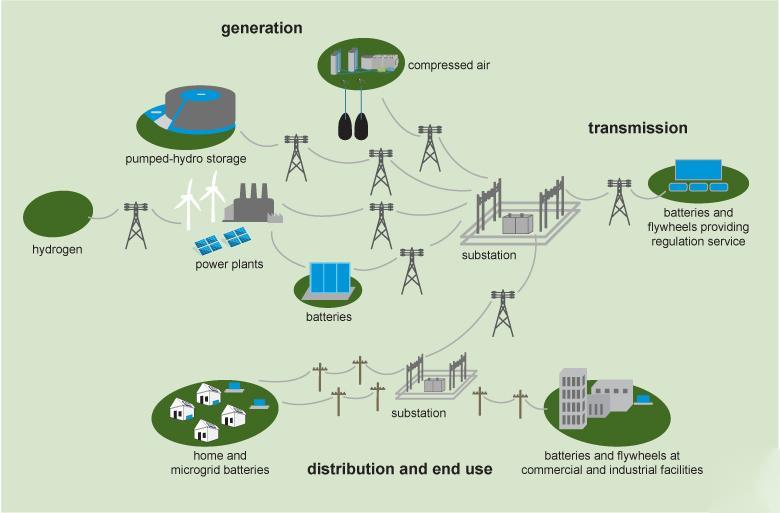
Mar . 08, 2024 10:35 Back to list
Grid Systems Office of Electricity
Natural disasters and physical or cyber-attacks pose significant threats to the grid's ability to provide power, impacting customers and essential services. Power outages can inconvenience customers, but in more severe cases, they can cut people off from critical services that are essential for their health and well-being. To address these challenges, new grid systems such as microgrids offer a solution by providing localized grids that can operate autonomously, either disconnected from the traditional grid or supporting remote and isolated communities. In this regard, the Office of Electricity (OE) plays a crucial role in supporting critical grid system research to enhance grid resilience, mitigate disruptions, and integrate renewable energy and distributed energy resources to drive the transition towards a more flexible, socially equitable, and secure grid of the future.
Microgrid Research and Development (MGRD) activities are at the forefront of advancing grid resilience and mitigating disturbances. Microgrids have the capability to disconnect from the main grid and operate autonomously and locally, enabling them to continue functioning even when the traditional grid is down. Furthermore, microgrids can serve as a valuable resource for quicker system response and recovery during grid disturbances, making them an essential component in ensuring grid reliability and resilience.
The flexibility and efficiency of the electric grid are further enhanced through the adoption of microgrids, especially as they integrate the increasing deployment of renewables like solar farms and electric vehicles. By utilizing local energy sources to meet local energy demand, microgrids help reduce energy losses in transmission and distribution, thereby improving the overall efficiency of the electric delivery system. Looking ahead to 2035, the goal is for microgrids to become integral building blocks of the future electricity delivery system, supporting resilience, decarbonization, and affordability. To achieve this vision, OE focuses on developing and validating tools, methods, and technologies across strategic R&D areas such as reducing deployment time and costs, advancing control and protection systems, and integrating models for effective planning and operation.

The Transmission & Distribution co-simulation of microgrid impacts is crucial in identifying and validating the value that microgrids bring to the overall grid system. By understanding the benefits and impacts of microgrids on the transmission and distribution network, stakeholders can make informed decisions on their integration and deployment. Moreover, enabling regulatory and business models for broad microgrid deployment is key to driving investment in microgrid projects by private sector entities, regulated utilities, communities, and states. Identifying the regulatory frameworks that support microgrid investment is essential for scaling up microgrid deployment and maximizing their benefits across different regions and sectors.
The DOE Microgrid Program Strategy, initiated in December 2020, plays a vital role in defining strategic research and development areas to support OE's vision and goals for the grid. The strategy development process involved collaboration with microgrid experts, who identified key areas of focus to achieve impactful results in reliability, resilience, decarbonization, and affordability over the next 5 to 10 years. Through the creation of strategic white papers targeting specific R&D areas and outlining the program's overarching vision, objectives, and targets, the Microgrid Program Strategy aims to drive innovation and advancement in microgrid technology and deployment.
In conclusion, the evolution of microgrids as essential components of the future electricity delivery system is crucial for enhancing grid resilience, supporting decarbonization efforts, and ensuring affordability. Through strategic R&D efforts and collaboration with industry experts and stakeholders, the OE is spearheading advancements in microgrid technology and deployment to address the challenges posed by natural disasters, cyber-attacks, and grid disturbances. By integrating microgrids into the grid infrastructure, optimizing their control and protection systems, and fostering regulatory frameworks for widespread deployment, the energy sector can move closer towards a more reliable, sustainable, and secure grid system for the future.
-
Stackable Battery System: Revolutionizing C&I Energy Storage with Suzhou ACDC
NewsJul.21,2025
-
Revolutionizing EV Charging with Suzhou DC Quick Charging Stations Solutions
NewsJul.21,2025
-
Revolutionize Your Power Needs with Suzhou ACDC's Portable Power Station Solutions
NewsJul.21,2025
-
Outdoor Integrated Temperature Control Cabinet: Elevating Energy Storage Cabinet Efficiency
NewsJul.21,2025
-
Container Type Energy Storage System: Revolutionizing Energy Storage with Stackable Battery Solutions
NewsJul.21,2025
-
Advanced Self-Cooling Energy Storage Cabinet Solutions
NewsJul.21,2025























